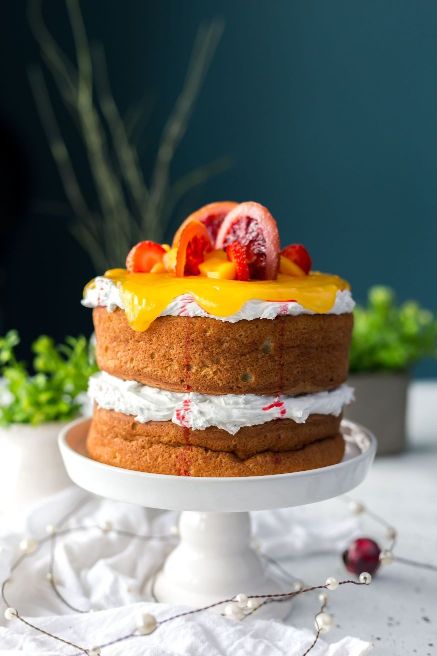A cake should be a delightful and delicious treat, but for some, it can be a source of disappointment.
One of the most common problems with cake is that it can have an unpleasant flour taste.
This flour taste is undesirable for many people and can ruin the experience of enjoying a cake.
In this article, I’ll reveal 4 simple techniques that will help you to get rid of the flour taste in your cake. These tips are easy to follow and don’t require any special equipment or advanced baking skills.
So whether you’re a beginner or a seasoned baker, read on to learn how to get rid of flour taste in cake!
Why Does My Cake Taste Like Flour?
Before we dive into techniques for getting rid of the flour taste in cake, it’s important to understand what causes it in the first place.
1. Insufficient Mixing
One common reason why a cake may taste like flour is if the batter is not mixed thoroughly enough.
When the flour is not evenly distributed and fully incorporated into the batter, it can create areas within the cake where the taste of flour is more pronounced.
This uneven distribution can result in pockets of floury taste within the cake, affecting its overall flavor and texture.
To ensure a uniform mixture, it is important to use a whisk or electric mixer and follow the recipe instructions carefully.
This will help ensure that the flour is well blended with the other ingredients, resulting in a more balanced and flavorful cake.
2. Improper Flour Measurement
The accurate measurement of flour is crucial in baking, as it can greatly impact the texture and taste of the final product.
Using too much flour can make the cake taste dry and powdery, resembling the flavor of the flour itself.
On the other hand, using too little flour can result in a dense and undercooked cake. To achieve the desired texture and taste, it is important to measure the flour accurately.
There are two commonly used methods for measuring flour:
Using a kitchen scale or the spoon-and-level method. With a kitchen scale, you can weigh the precise amount of flour required by the recipe.
Alternatively, the spoon-and-level method involves using a spoon to scoop the flour into the measuring cup and then leveling off the excess with a straight edge.
By using the appropriate method, you can ensure that the right amount of flour is used, leading to a better-tasting cake.
3. Low-Quality Flour
The quality of the flour you use plays a crucial role in determining the taste and texture of your cake.
When using low-quality or expired flour, it can adversely impact the final outcome.
Such flour may possess undesirable flavors that become apparent once the cake is baked, resulting in an unpleasant taste.
This is why it’s important to use fresh and high-quality flour to ensure the best possible flavor and texture in your cake.
4. Lack of Flavorings
Some cake recipes heavily rely on additional flavorings such as vanilla extract, cocoa powder, or spices to enhance the taste and mask any potential floury flavor.
If your recipe doesn’t call for an adequate amount of these flavorings, the natural taste of the flour can become more noticeable.

In such cases, the absence of strong flavors can make the flour’s inherent taste more prominent, which may not be desirable for a flavorful and delicious cake.
To ensure a well-balanced and enjoyable cake, it’s important to follow the recipe’s recommended amount of flavorings or consider adjusting them according to your personal preference.
How to Get Rid of Flour Taste in Cake – Revealed
Now that we know what causes flour taste in cake, let’s explore 4 simple techniques for reducing or eliminating it.
1. Cut off the Crust
Cutting off the crust of a cake is a common practice that can enhance the overall taste of the cake.
This is because the crust can sometimes have a more intense flour taste than the rest of the cake.
By removing the crust, you can create a smoother and more uniform texture, making the cake more enjoyable to eat.
To remove the crust, you will need a serrated knife, which is ideal for cutting through the cake without crushing it.
Begin by cutting off the top of the cake, making sure to slice it off evenly. Then, carefully cut around the sides of the cake, removing the outer layer of crust.
You may need to adjust the angle of the knife slightly to ensure that you remove only the crust and not too much of the cake itself.
2. Brush It With Syrup
A simple syrup made of equal parts sugar and water can enhance the taste and texture of your cake.
Brushing the cake with this syrup can add moisture and sweetness to the cake, which can help balance out the flour taste.
Apart from adding moisture and sweetness, brushing the cake with syrup also helps to keep the cake moist for a longer time.
The sugar in the syrup acts as a preservative and keeps the cake fresh. You can use this technique on any type of cake, including sponge, chiffon, and butter cakes.
For an extra flavor boost, you can also add various flavorings like vanilla or lemon juice to the syrup.
This will give your cake an additional layer of taste and aroma. You can experiment with different flavorings to find the one that best complements your cake.
It’s important to note that brushing the cake with too much syrup can make it overly sweet and soggy.
So, it’s best to apply a thin layer of syrup on the cake to avoid this. Brushing the syrup on the cake while it’s still warm will help the syrup to absorb better.
3. Add a Glaze or Frosting
When it comes to choosing a frosting or glaze, there are many options available.
You can use a classic buttercream, a tangy cream cheese frosting, or a rich chocolate glaze to add a touch of decadence to your cake.

You can also experiment with other flavors like lemon, raspberry, or caramel to create unique taste combinations.
To ensure that the frosting or glaze complements the cake and masks the flour taste, it is important to spread it evenly.
Make sure that every bite of the cake has enough frosting or glaze to enhance the flavor.
You can use a spatula or a piping bag to apply the frosting or glaze smoothly and uniformly.
Adding a glaze or frosting to your cake not only enhances the taste but also improves its appearance. A beautifully decorated cake can be a showstopper at any event
4. Serve With Toppings
Fresh fruit, whipped cream, or ice cream can help balance out the flour taste and make the cake more enjoyable.
You can also sprinkle some powdered sugar or cocoa powder on top for extra flavor.
Fruits like berries or peaches can add a tartness that can help cut through the flour taste, while whipped cream or ice cream can add richness and creaminess.

It’s worth noting that these tips can only help to a certain extent. If the flour taste is very strong, it may not be completely eliminated.
How to Get Rid of Flour Taste in Cake – Conclusion
In conclusion, an unpleasant flour taste in the cake can be a disappointing experience, but there are many ways to reduce or eliminate it.
By cutting off the crust, brushing with syrup, adding a glaze or frosting, and serving with toppings, the flour taste can be minimized.
By following these tips and solutions, you can ensure that your cake tastes delicious and delightful.

